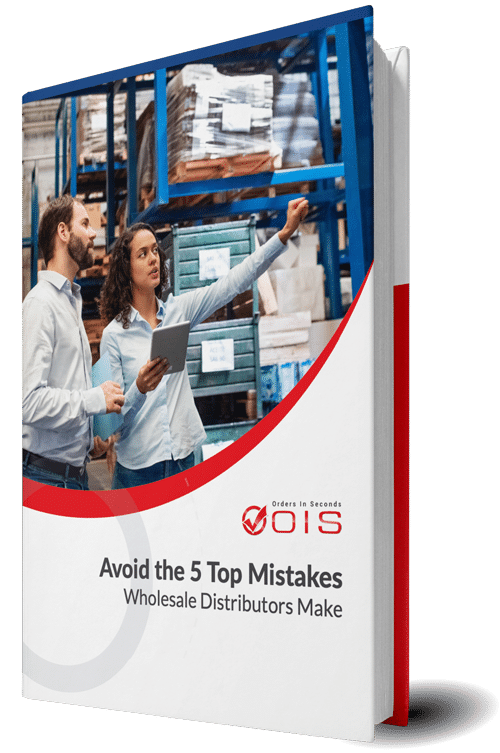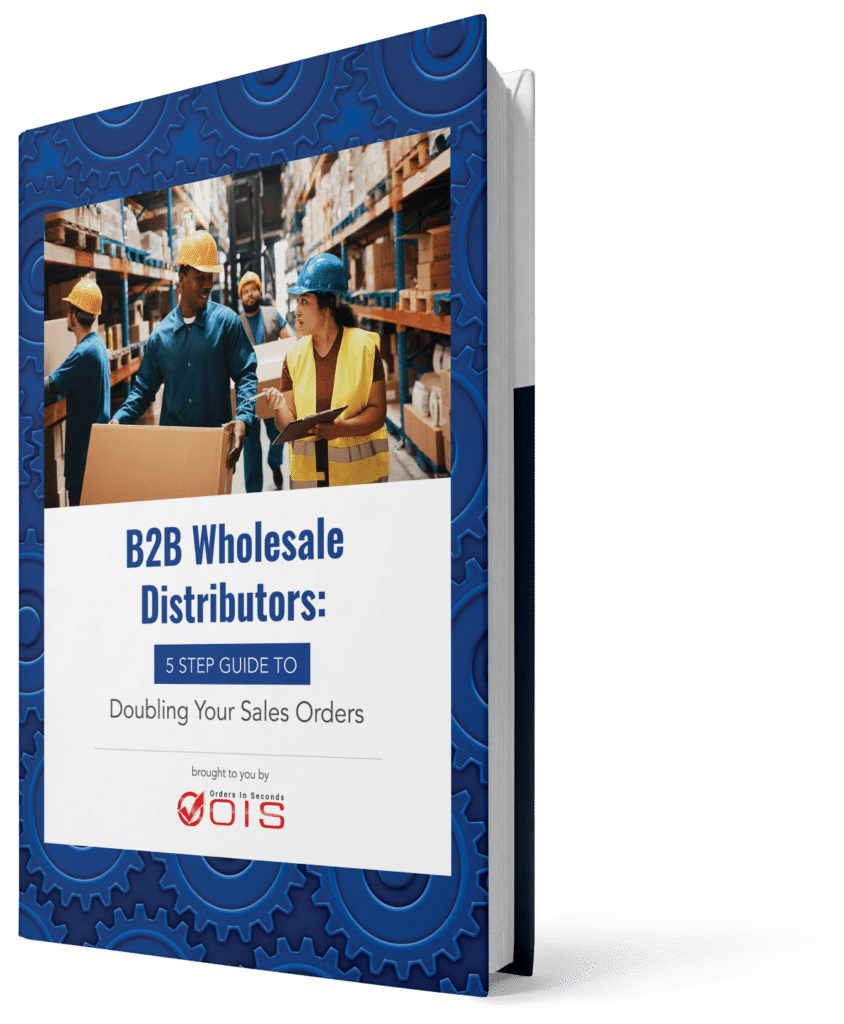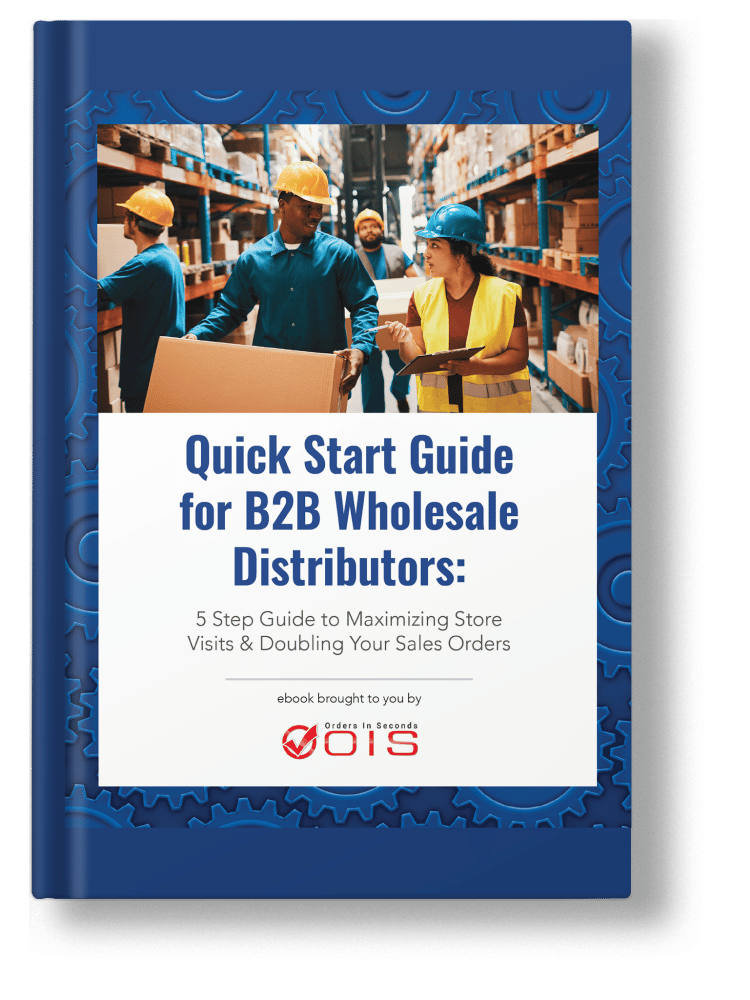Key Takeaways
This concise tutorial will instruct you on computing the COGM formula, essential for efficiently overseeing production costs and pinpointing the Cost of Goods Manufactured.
- The cost of goods manufactured (COGM) is a critical financial metric for manufacturers, encapsulating direct materials, direct labor, and manufacturing overhead to reflect the total production costs within a specific period.
- Understanding the difference between COGM and the cost of goods sold (COGS) is essential, as COGM focuses on total manufacturing costs during production, while COGS includes the direct costs of goods sold and appears on the income statement.
- Technology, particularly cloud manufacturing software, significantly enhances the accuracy and efficiency of COGM calculations by automating data capture, providing real-time insights, and minimizing human error.
Table of Contents
- Understanding the Cost of Goods Manufactured (COGM)
- The Formula for Calculating COGM
- Practical Example of COGM Calculation
- Journal Entries for COGM
- Enhancing COGM Calculation with Technology
- Importance of COGM in Financial Reporting
- Best Practices for Managing COGM
- Summary
- Frequently Asked Questions
- Elevate Your Manufacturing and Wholesale Distribution with OIS Solutions
Understanding the Cost of Goods Manufactured (COGM)

The financial health of a manufacturing business is intimately connected to the cost of goods manufactured (COGM), which reflects the entirety of expenses associated with creating finished goods over a designated period. This encompasses all direct and indirect costs, making COPM an indispensable tool for navigating production-related expenditures and informing key strategic choices.
Examining the various costs incurred allows companies to evaluate their operational profitability and refine their manufacturing methods in order to maximize efficiency while minimizing overhead expenses.
Difference Between COGM and COGS
Grasping the concept of COGM requires differentiating it from Cost of Goods Sold (COGS). The focus of COGM is strictly on aggregate manufacturing costs accumulated during a particular timeframe, whereas COGS encompasses all direct costs associated with producing goods that are ultimately sold to customers. While COGM underpins the production process, detailing its journey through manufacturing stages, COGS emerges prominently in the income statement by laying out direct expenditures prior to any sales.
This separation between them is essential for precise financial documentation and developing a robust pricing approach.
Components of COGM
Exploring the components of COGM, it consists of three fundamental elements:
Direct materials: This category includes all raw inputs that are used directly in the creation of products, along with their respective costs for direct material.
Direct labor: Referred to as direct labors costs, this encompasses wages paid to workers who play a hands-on role in product fabrication.
Manufacturing overhead: Encompassing additional manufacturing process expenses like utilities and facility rent alongside maintenance expenses for equipment.
Manufacturing overhead represents a collective term for various indirect manufacturing costs essential to support production activities including but not limited to things such as utilities and the wear-and-tear cost associated with equipment use over time or equipment depreciation.
The Formula for Calculating COGM

Understanding the formula for calculating the cost of goods manufactured (COGM) can significantly transform a manufacturer’s financial management. It is deceptively straightforward yet has profound implications. Take the initial WIP inventory, incorporate all manufacturing costs incurred, and then deduct the ending WIP inventory.
By employing this method to determine goods manufactured COGM, it also establishes an essential framework for effectively monitoring COGM over time. This ensures that every single expense within the production process contributes towards creating value in relation to its corresponding expenditure.
Step-by-Step Calculation Process
The process of calculating the cost of goods manufactured (COGM) is comprehensive and methodical. It begins with ascertaining the amount of direct materials utilized, followed by a computation of direct labor. This calculation is achieved by multiplying the hours worked by employees with their respective hourly wage rates.
Subsequently, allocate manufacturing overhead costs using an established rate that encompasses only those expenses directly associated with production activities. Overhead costs may consist of indirect materials, indirect labor, maintenance and repairs on production equipment, utilities for factories among others. The aggregation of these amounts over a given period results in the total cost accrued through all stages involved in producing finished goods during that interval.
Importance of Accurate COGM Calculation
An accurate calculation of the Cost of Goods Manufactured (COGM) is paramount as it provides businesses with a critical foundation for setting ideal product prices, assessing production efficiency, and implementing more effective inventory management and cost control measures. Accurate COGN calculations are essential in streamlining operations and promoting continuous growth by delivering transparency into the manufacturing costs that drive an organization’s financial results.
Practical Example of COGM Calculation

Imagine a manufacturing business disclosing its cost of goods manufactured for the month of April to be $34,000. This amount results from the meticulous process that involves compiling all incurred manufacturing costs for that quarter, which sum up to $53,500, and then making appropriate adjustments based on the beginning and ending work-in-progress (WIP) inventories.
From this concrete scenario, one can see that COGM serves as a critical indicator of financial health within a manufacturing firm. It plays an essential role in both monitoring financial performance and facilitating informed decision-making for future operational strategies.
Beginning WIP Inventory
The saga of calculating the cost of goods manufactured (COGM) begins with taking into account the beginning work in progress inventory. This initial value denotes the price of goods that were partially completed at the onset of an accounting period, carried forward from prior periods and laying a foundational role for determining production costs amassed in current operations.
Grasping the significance of these partial goods is imperative since it affects the total COGM by indicating monetary resources previously allocated to manufacturing activities during their progression toward completion.
Costs Incurred During Production
The essence of the manufacturing process is encapsulated by production costs, which cover expenses for raw materials, direct labor, and manufacturing overhead. Every expenditure from acquiring raw material to remunerating assembly line workers plays a part in constituting the total manufacturing costs, with labor costs being key components. These are vital when it comes to calculating COGM as they indicate the amount invested in transforming raw materials into finished goods while also shedding light on cost control strategies and overall manufacturing efficiency.
Ending WIP Inventory
For the accurate computation of Cost of Goods Manufactured (COGM), it is imperative to deduct the ending WIP inventory, which symbolizes the valuation of items that remain within the production process at an accounting period’s conclusion. This deduction from total manufacturing costs is critical as it ensures that financial statements reflect costs pertaining solely to finished goods, thereby directly influencing COGM assessments.
Journal Entries for COGM

The financial statements are meticulously updated with journal entries that reflect the cost of goods manufactured (COGM), which encapsulate all manufacturing costs involved. This detailed recording tracks the transformation of raw materials through their progression into work-in-process and eventually, finished goods. Through debiting and crediting pertinent accounts like raw materials inventory, WIP, and manufacturing overhead, businesses ensure precise representation of every expenditure within the manufacturing process in their financial records.
Reducing Raw Materials Inventory
The moment raw materials begin their transformation into work-in-process signifies a critical stage in the production process. When these materials exit the raw materials inventory to enter the manufacturing cycle, an accounting entry is made to credit the raw materials inventory account, indicating their departure from storage. This adjustment in journal entries marks the transition of idle resources into active elements engaged in adding value as they are shaped into products poised to be finished goods.
Adjusting WIP Inventory
Tweaking the work-in-progress (WIP) inventory demands meticulous attention to detail. The WIP account is charged with direct labor and overhead costs, representing both the efforts of workers directly involved in production and expenses that are tied specifically to manufacturing processes. As these expenditures arise, they cause an expansion in the value reflected within the WIP inventory as it encompasses goods still being fabricated.
Upon completion of these items, there’s a shift in accounting. Credits are applied to the WIP inventory while debits are recorded against finished goods inventory. This transfer delineates a changeover from incurred production costs to future income once those finished goods enter into available stock for sale.

Technological advancements have transformed the approach to calculating the cost of goods manufactured (cogm). Some significant advantages of employing cloud manufacturing software and manufacturing ERP systems are:
- Facilitating automatic data collection
- Simplifying the distribution of expenses
- Offering insights in real time
- Minimizing chances for human mistakes
These cutting-edge solutions enable manufacturers to monitor components with exceptional precision, fostering an environment that is both more productive and competitive within the industry.
Benefits of Cloud Manufacturing Software
Modern production management heavily relies on cloud manufacturing software, which provides an array of advantages such as:
- Scalability that can be adjusted according to demand
- Precise tracking of costs associated with individual units of production
- Instantaneous access to vital data
- Streamlining the exchange of information
This software guarantees that manufacturing operations proceed with elevated efficiency and clarity.
Detailed reporting capabilities delivered by the cloud platform furnish businesses with critical insights into each facet of the manufacturing process. These insights empower companies to make decisions rooted in knowledge that can enhance profit margins.
Real-Time Data Integration
In today’s dynamic manufacturing sector, the integration of real-time data is essential for maintaining business nimbleness. Inventory management intertwines with procurement and production planning through cloud manufacturing software, granting immediate access to vital production information. With up-to-the-minute insights available, those in charge can swiftly adapt to market fluctuations and drive operational efficiency.
Real-time analytics are pivotal in refining production processes and pinpointing cost drivers. These analytics contribute significantly to improving overall manufacturing efficiency and the accuracy of calculations related to the cost of goods manufactured (COGM).
If mistakes are holding back your wholesale business, download our free eBook “Avoid the Top 5 Mistakes Wholesale Distributors Make” and discover key strategies to optimize your operations for success!

Avoid the Top 5 Mistakes Wholesale Distributors Make
The role of the Cost of Goods Manufactured (COGM) is crucial not only in production but also in financial accounting. It serves several key purposes, including:
- Determining the cost of goods sold that appears prominently on an income statement.
- Offering a comprehensive view of all manufacturing expenses incurred.
- Affecting a company’s fiscal health, by influencing gross margin and total profitability.
Ensuring precise computation of COGM is essential for it allows financial statements to accurately represent production costs. This accuracy supports improved decision-making and strategic planning within a company.
Impact on Gross Margin
The significance of the Cost of Goods Manufactured (COGM) on a firm’s financial health is profound, especially when it comes to gross margin. Gross margin serves as an essential indicator that gauges the correlation between sales revenue and the costs associated with goods sold, hinged upon COGM for determining both direct and indirect costs.
Through vigilant tracking of COGM, businesses have the ability to refine their pricing strategies in order to sustain or enhance their gross margins. This action has immediate implications for a company’s profitability and its position within the competitive market landscape.
Role in Budgeting and Forecasting
Within the sphere of financial strategy, the knowledge provided by COGM data is essential for precise budgeting and forecasting. This data supports companies in several ways.
- Establish achievable financial targets through a comprehensive grasp of impending manufacturing costs
- Predict potential fiscal hurdles
- Distribute resources judiciously
- Determine appropriate levels of safety stock to counterbalance unforeseen demand variations
Possessing precise COGM information empowers organizations to make decisions based on solid evidence, bolstering their fiscal well-being.
Such forward-looking insight is pivotal for sustaining an upward financial path and securing the resilience of the manufacturing business amidst shifts in market dynamics.
Best Practices for Managing COG
Maintaining a sharp focus on the relationship between production costs and sales is critical for effective management of the Cost of Goods Manufactured (COGM). Implementing best practices in managing COGM can yield substantial gains in controlling manufacturing overhead, overseeing inventory, and streamlining cost control.
Continuously monitoring expenses arising from the production process and evaluating them against sales revenue enables businesses to pinpoint areas where they can boost manufacturing efficiency and increase profit margins.
Efficient Inventory Management
Optimizing inventory management is crucial for the effective control of the Cost of Goods Manufactured (COGM). Significant savings can be achieved through improved management and storage of raw materials inventory and work-in-progress items, reducing holding costs. An efficient warehouse organization that places high-demand items within easy reach enhances an accurate stock-keeping unit (SKU) system, allowing precise monitoring of inventory quantities.
Establishing robust relationships with suppliers plays a key role in preventing supply chain issues and maintaining a steady flow in the production process.
Cost Control Measures
Implementing cost control measures is essential for fostering an efficient lean manufacturing operation. Essential strategies to consider include:
- Evaluating the Cost of Goods Manufactured (COGM) data to identify potential savings and enhance production procedures
- Adopting a Just-in-Time approach to inventory management, which helps reduce holding expenses
- Applying ABC analysis that allows prioritization of higher-value items for better oversight
These tactics are instrumental in curbing costs and elevating your manufacturing process’s efficiency.
These approaches coupled with efforts to decrease ending Work-In-Process (WIP) inventory lead toward creating a more streamlined and economical model for manufacturing operations.
Summary
Mastering the COGM formula is akin to unlocking the secret to a manufacturing business’s financial success. By understanding its components, accurately tracking costs, and utilizing technology for real-time data integration, companies can optimize their production processes and enhance profitability. As we’ve explored the intricacies of COGM, remember that it is not simply a metric but a strategic tool that can transform your manufacturing operations and elevate your company’s financial performance.
Frequently Asked Questions
COGM zeroes in on the sum of manufacturing costs during the production phase, whereas COGS includes all expenses related to both producing and selling products within an identical accounting timeframe.
The total manufacturing costs can be computed by summing the expenses of direct materials, direct labor, and manufacturing overhead. This calculation includes multiplying the units produced by the unit cost of raw materials, assessing direct labor costs from wages paid and hours logged by employees, and allocating a pre-established rate to cover manufacturing overhead costs.
Why is it important to accurately calculate COGM?
Accurate calculation of the Cost of Goods Manufactured (COGM) is crucial as it has a direct effect on a company’s financial outcomes, profit margins, and the strategic choices it makes.
This precision influences several aspects such as setting prices for products, optimizing production processes, managing costs effectively, and controlling inventory levels.
Certainly, by leveraging technology like cloud manufacturing software and ERP systems, the enhancement of COGM (Cost of Goods Manufactured) calculations is achievable through the automation of data collection, assimilation of real-time information, and diminishment of mistakes. This progression leads to precise and prompt insights into costs.
Accurate calculation of the Cost of Goods Manufactured (COGM) is vital for financial reporting, as it helps in determining the Cost of Goods Sold (COGS), a critical element for assessing a company’s financial health. Ensuring that COGM is precisely computed guarantees that production costs are accurately represented on financial statements.
Elevate Your Manufacturing and Wholesale Distribution with OIS Solutions
As we’ve explored, understanding and calculating the Cost of Goods Manufactured (COGM) is vital for maintaining financial health and optimizing production processes in manufacturing. But beyond just understanding COGM, it’s essential to have the right tools to streamline your operations and ensure accuracy.
Orders in Seconds (OIS) provides innovative solutions specifically designed to support manufacturing and wholesale distribution businesses. With OIS, you can automate your processes, from order-taking to warehouse management, and even leverage an eCommerce platform. Seamlessly integrate these solutions with popular ERP systems to enhance efficiency and accuracy across your operations.
OIS helps streamline your entire workflow, reducing manual tasks and minimizing errors. This allows your team to focus on what they do best—delivering exceptional products and services to your customers.
Leverage the power of technology to simplify your processes and drive your business forward. Schedule a free demo below!





